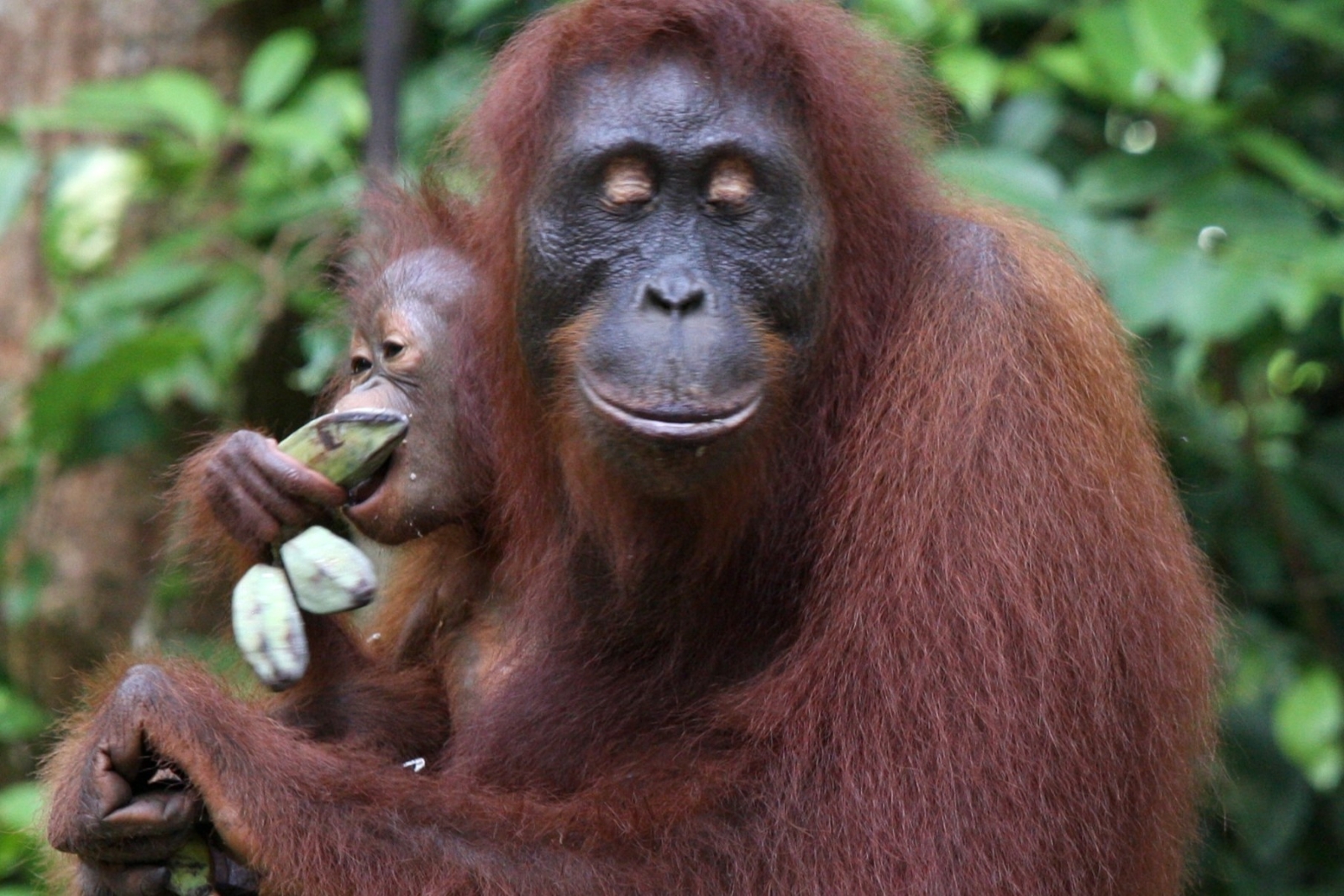
Having previously trekked to see the mountain gorillas in both Uganda and Rwanda, it has always been a dream of mine to visit Borneo one day to see orangutans, and we finally made it!
Orangutans are the only great apes found in Asia, and along with gorillas and chimpanzees, they are remarkably similar to humans in terms of anatomy, physiology, and behavior. They are also the most endangered of the great apes, found only in Borneo and Sumatra. It was truly a special treat to be able to see them in the wild.
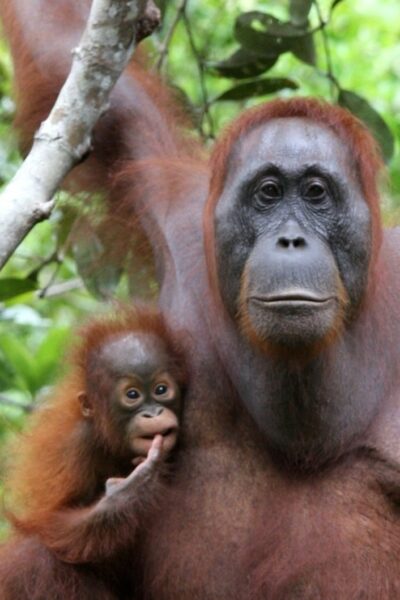
Although perhaps not as well known as Dian Fossey, who studied mountain gorillas, or Jane Goodall, who studied chimpanzees, Dr. Birutė Galdikas also has a special place in this group of women affectionately known as “Louis Leakey’s Angels.” She has pioneered the study of orangutans in Borneo for over 50 years.
The best way to appreciate these magnificent animals is to immerse yourself in their habitat on a three-night cruise aboard a traditional riverboat called a “klotok.” We gently navigated the rivers and channels at a slow pace, observing the stunning jungle views and wildlife along the way, including long-tailed macaques and proboscis monkeys. Each day, the crew on our private boat spoiled us with excellent fresh food, and each night we retired to our air-conditioned cabin for a very comfortable night’s sleep.
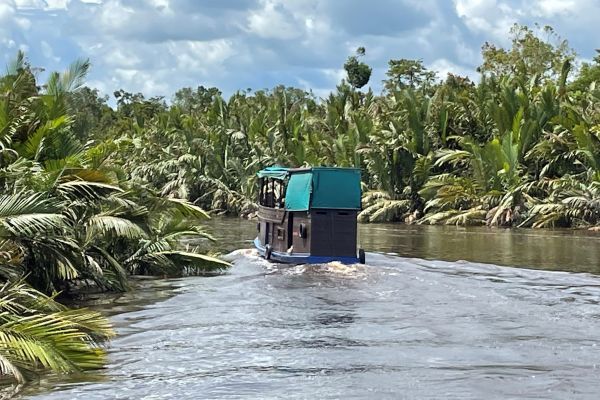 Traditional klotok riverboat
Traditional klotok riverboat
Accompanied by our excellent and knowledgeable guide Jefri, we made several stops each day to hike into the jungle to view orangutans. Since their rainforest habitat has been greatly diminished through gold mining and industrial palm oil plantations, some supplemental feeding of the orangutans is still offered at three of the original rehabilitation and release sites. Daily feedings provide a nutritional supplement to both rehabilitated and wild orangutans. This is especially helpful outside of fruiting season when food is not as plentiful in the forest canopy, and many orangutans visit these feeding stations for sweet potatoes and bananas. This was to our benefit, as we were able to enjoy some truly excellent, close-up viewing of these incredible animals!
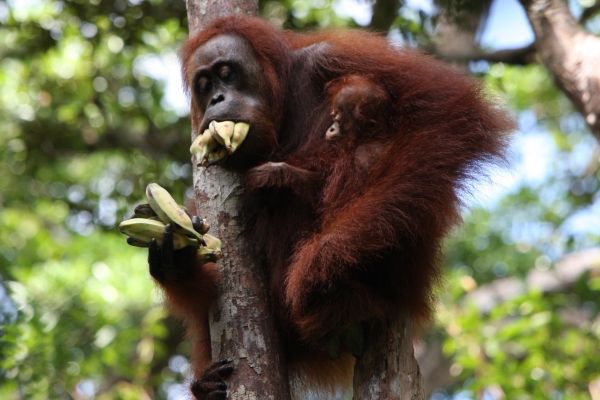
On our first day, we saw a total of 15 orangutans, including a wizened old female known as Lucy and an impressive and enormous dominant male known as Roger. This day provided excellent animal viewing and an exciting start to our trip.
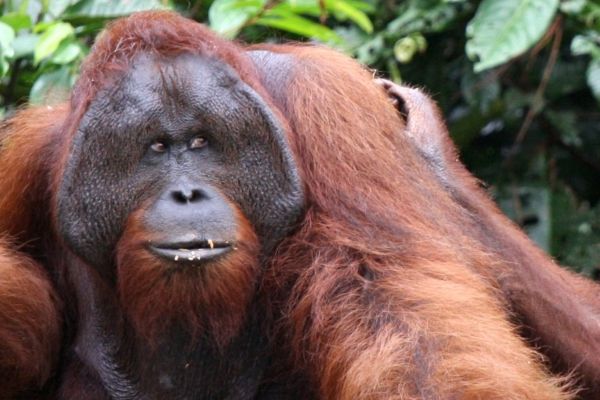 Roger the orangutan
Roger the orangutan
The next day, we traveled by motorized canoe to the famed Camp Leakey, established in 1971 by Dr. Galdikas as a research and rehabilitation center. We had some incredibly lucky timing on arrival when we were “greeted” by a young male orangutan called Rimba, who was walking on the ground near the entrance. Since orangutans spend around 90% of their time high up in trees, this was a special treat to see one so close. We enjoyed viewing a wide variety of other orangutans here, including several mothers with babies and some juveniles.
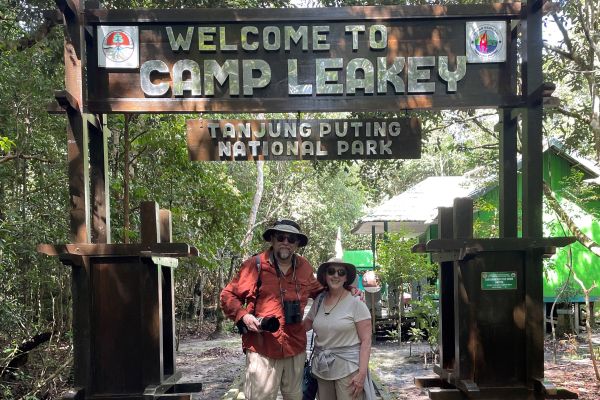
On Day 3, we started with a walk through the forest on our way to Station 2, Pondok Tanggui, for the 9 a.m. feeding. Over 35 orangutans have been released here over the years. We saw three different mother-infant pairs, with babies ranging from two to four years old, as well as some young males. Young orangutans stay with their mothers for around eight years, and afterwards live solitary lives, often reaching up to 40 years of age.
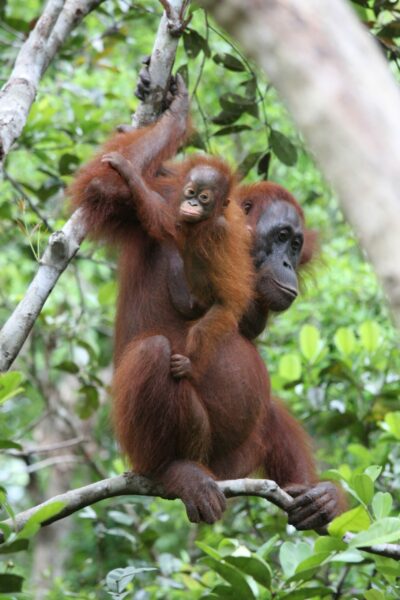
Our final orangutan viewing was back where it all started, Station 1, for the 3 p.m. feeding. Our old friend Roger was there, hanging out around the station long before the food even arrived. Several mothers with babies and a young juvenile joined him shortly, and we saw two more high in the trees on our way out, as we said our final goodbye to the orangutans on this fabulous adventure.
Please visit:
Our Sponsor
